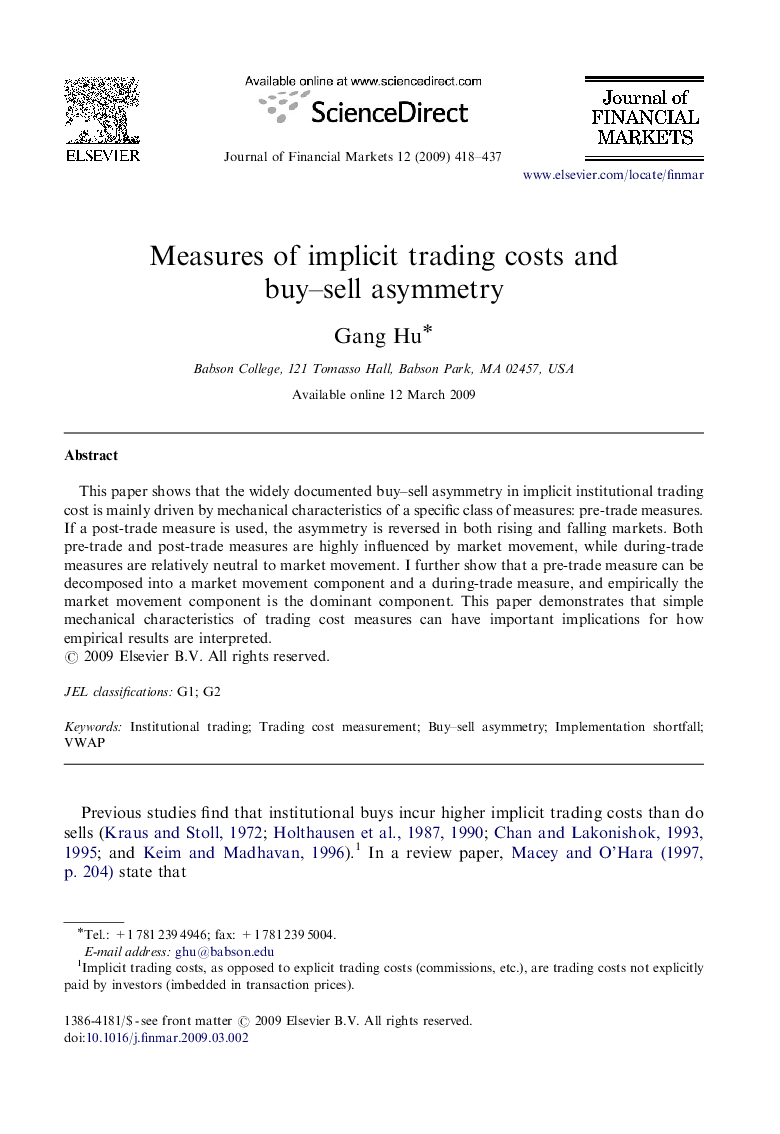| Article ID | Journal | Published Year | Pages | File Type |
|---|---|---|---|---|
| 960922 | Journal of Financial Markets | 2009 | 20 Pages |
Abstract
This paper shows that the widely documented buy-sell asymmetry in implicit institutional trading cost is mainly driven by mechanical characteristics of a specific class of measures: pre-trade measures. If a post-trade measure is used, the asymmetry is reversed in both rising and falling markets. Both pre-trade and post-trade measures are highly influenced by market movement, while during-trade measures are relatively neutral to market movement. I further show that a pre-trade measure can be decomposed into a market movement component and a during-trade measure, and empirically the market movement component is the dominant component. This paper demonstrates that simple mechanical characteristics of trading cost measures can have important implications for how empirical results are interpreted.
Keywords
Related Topics
Social Sciences and Humanities
Economics, Econometrics and Finance
Economics and Econometrics
Authors
Gang Hu,
